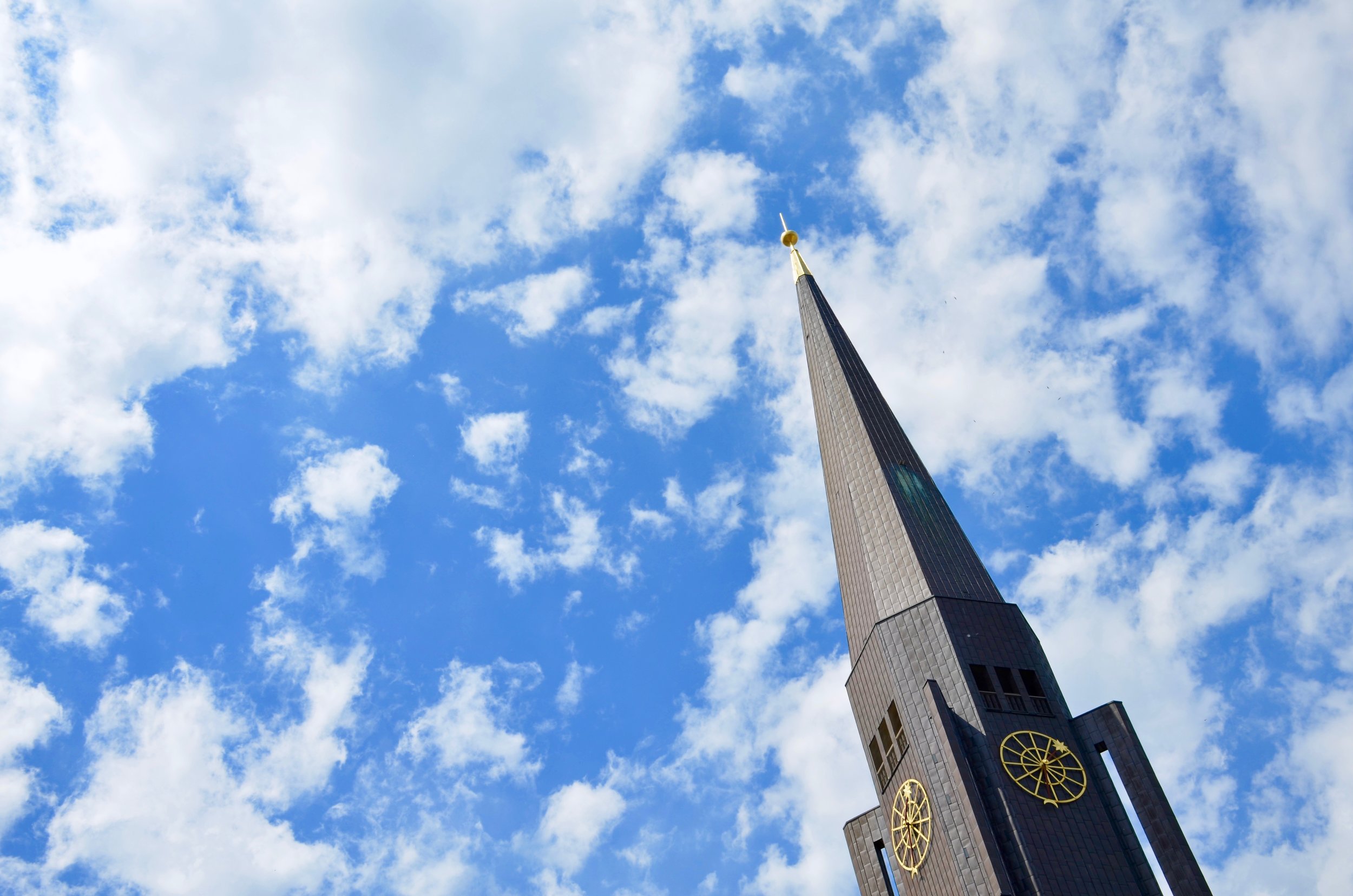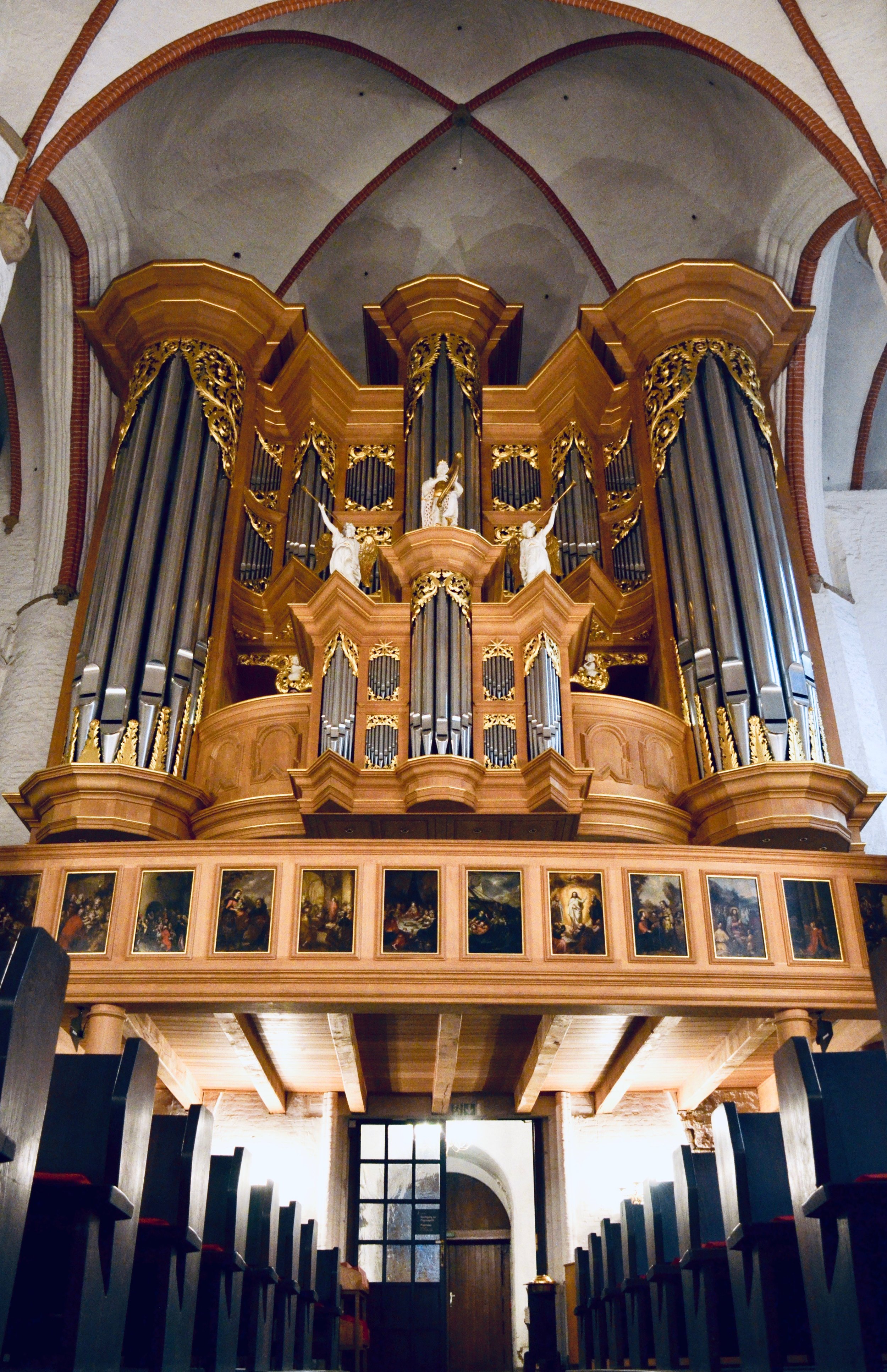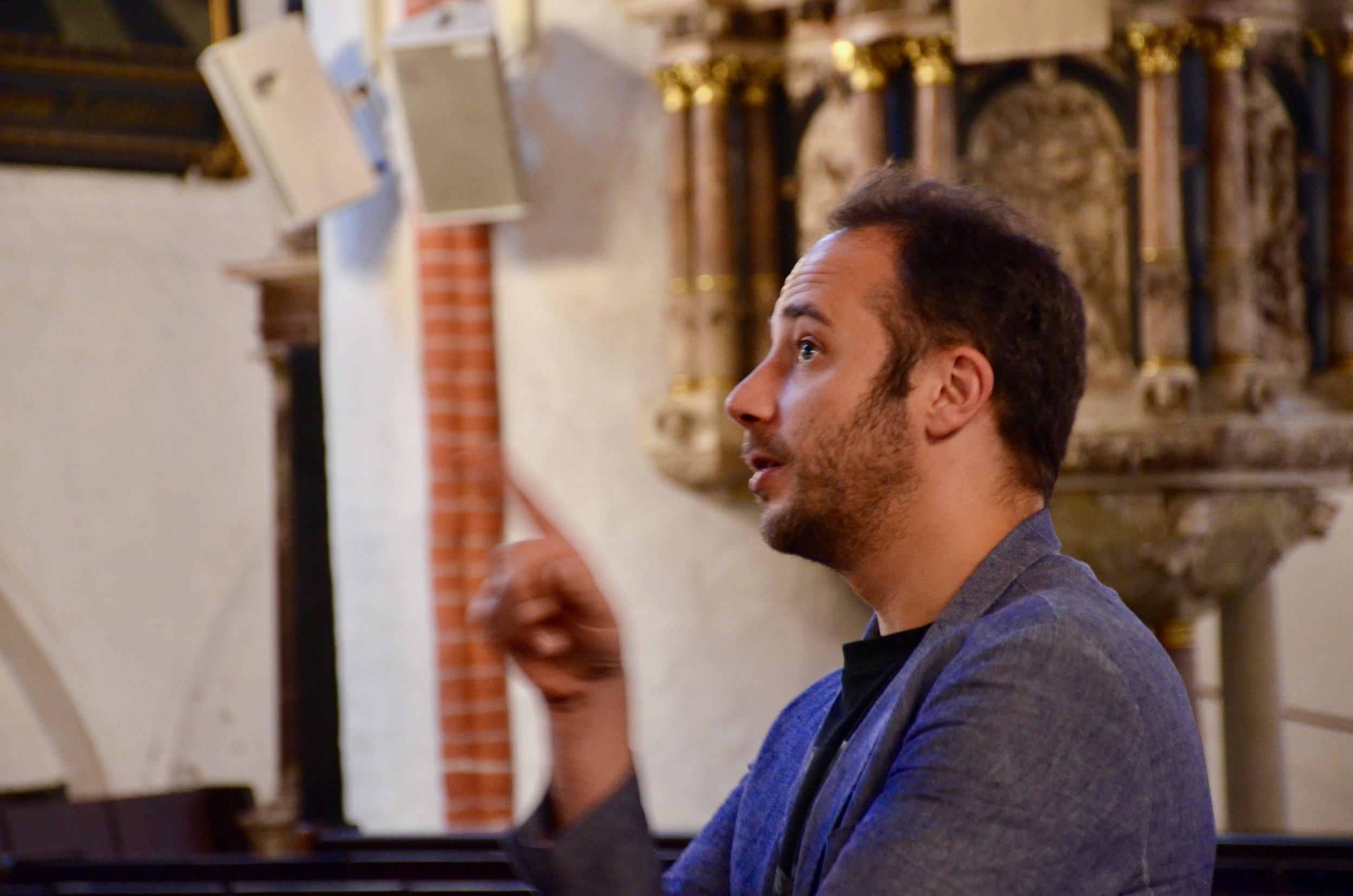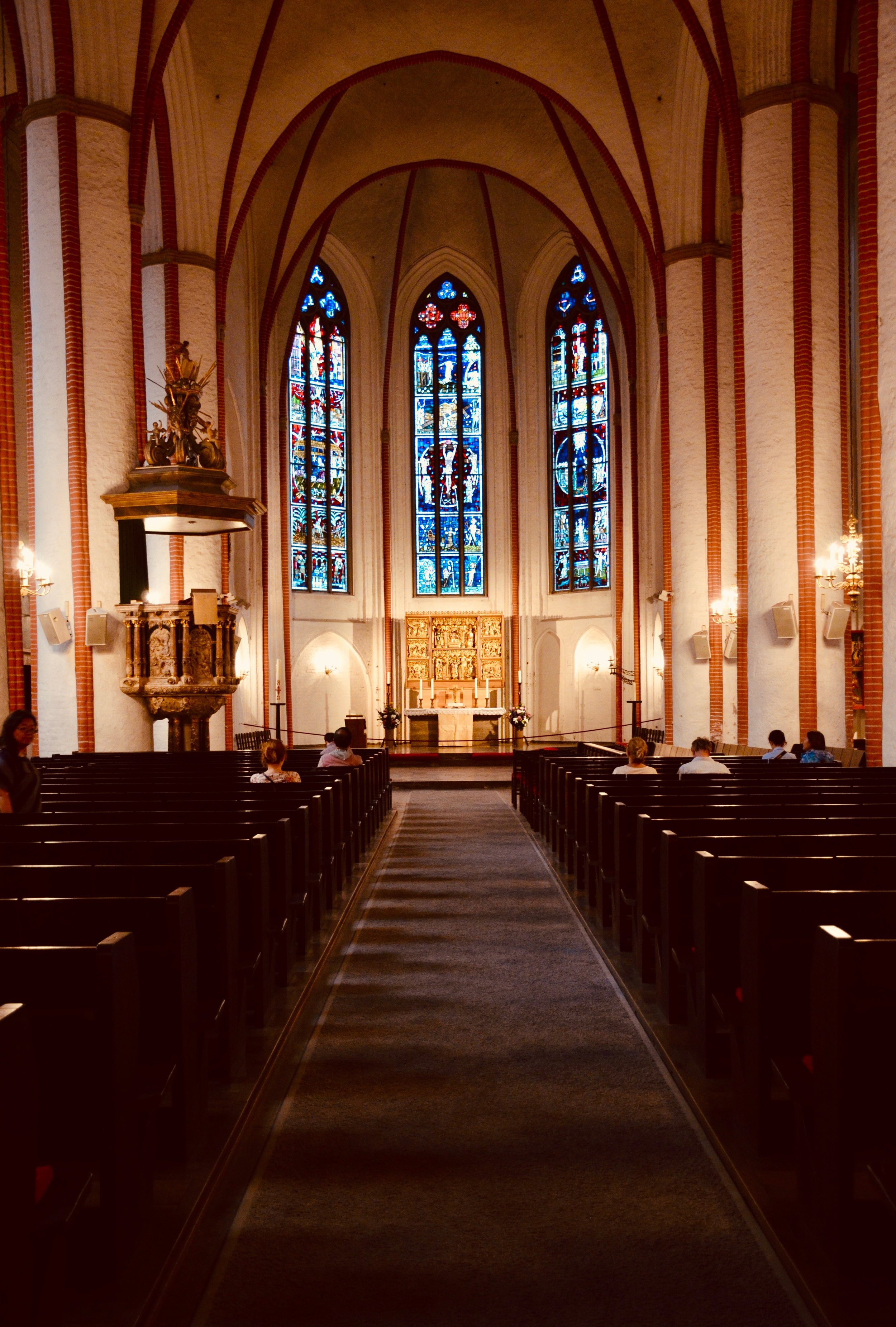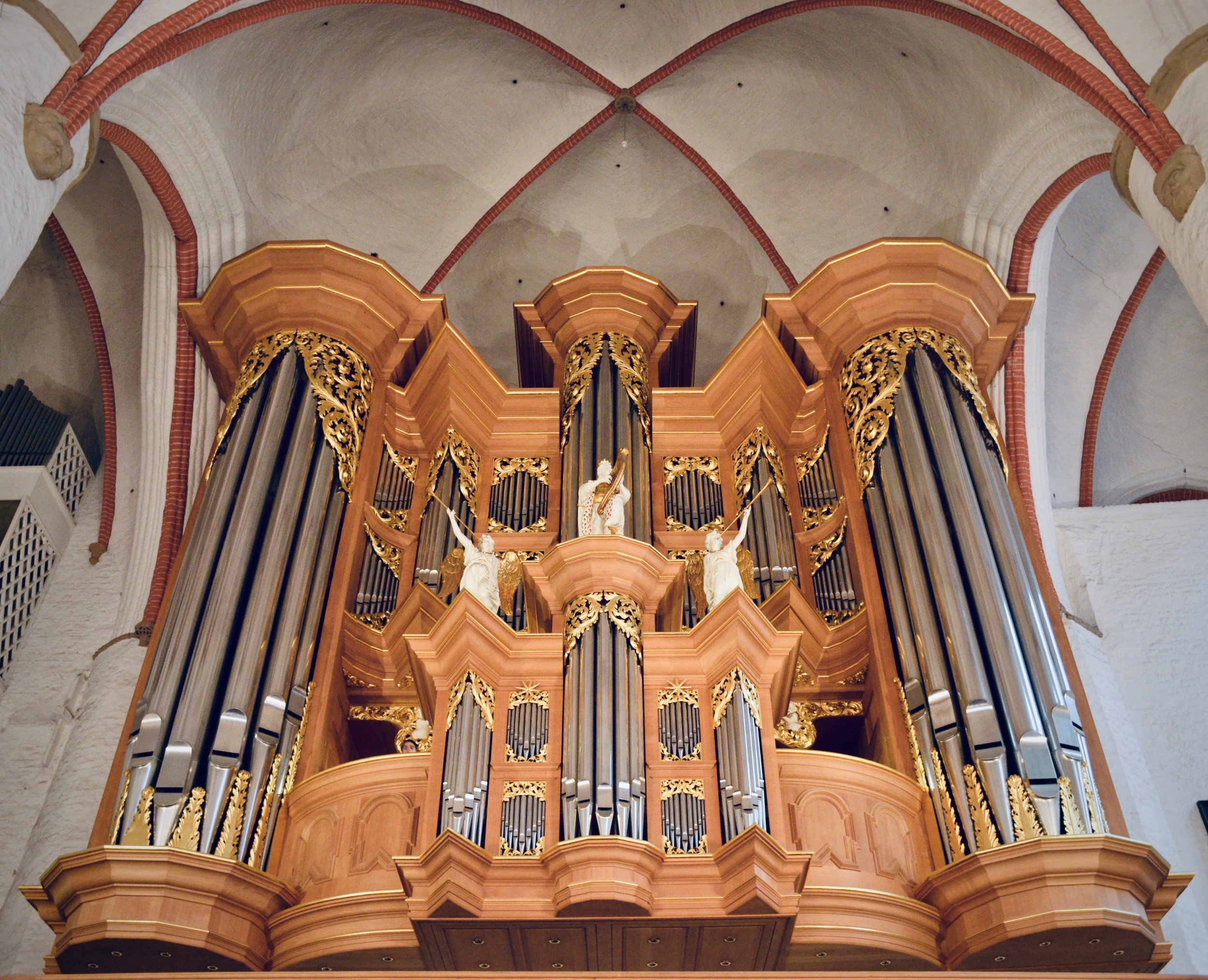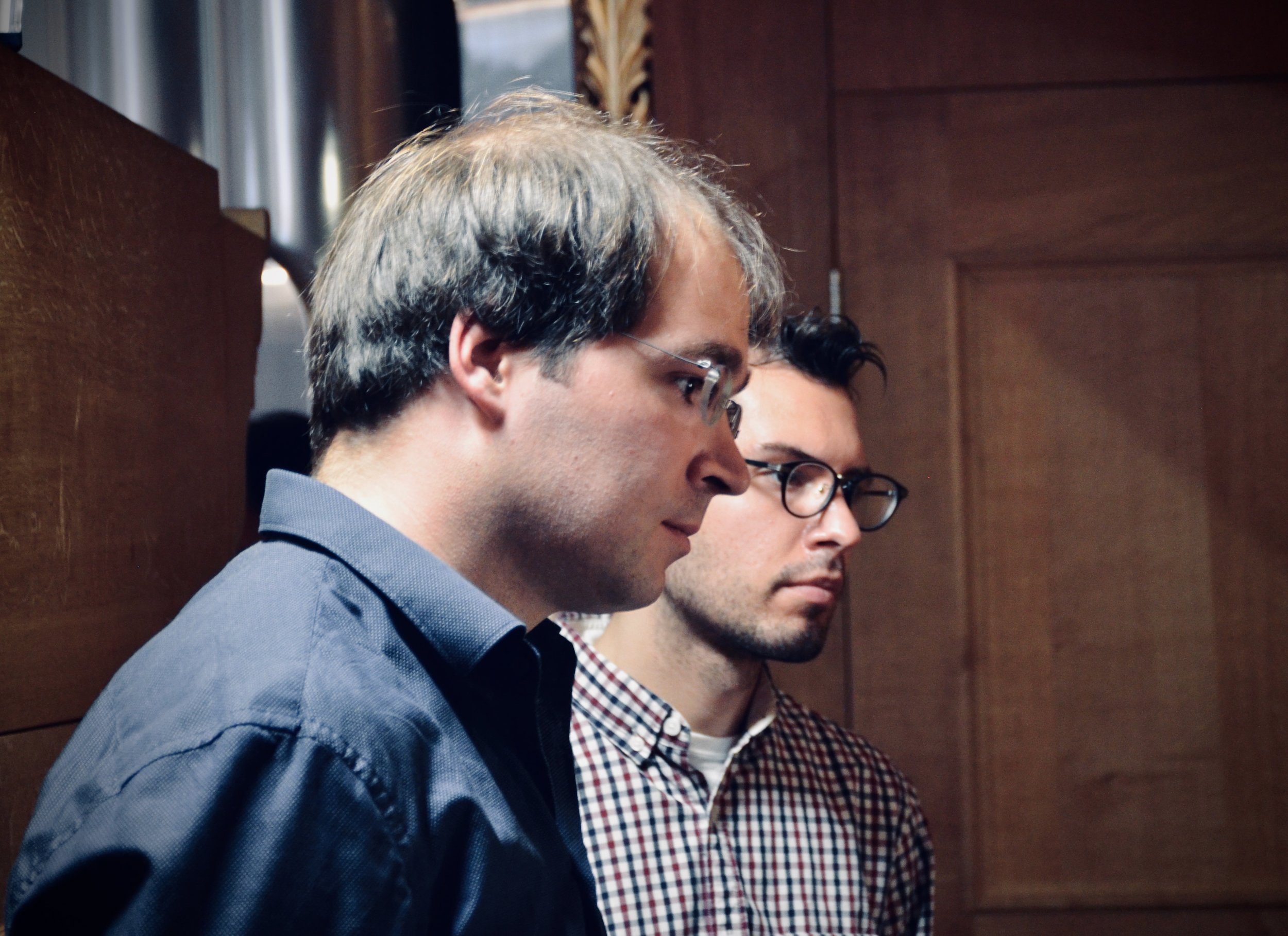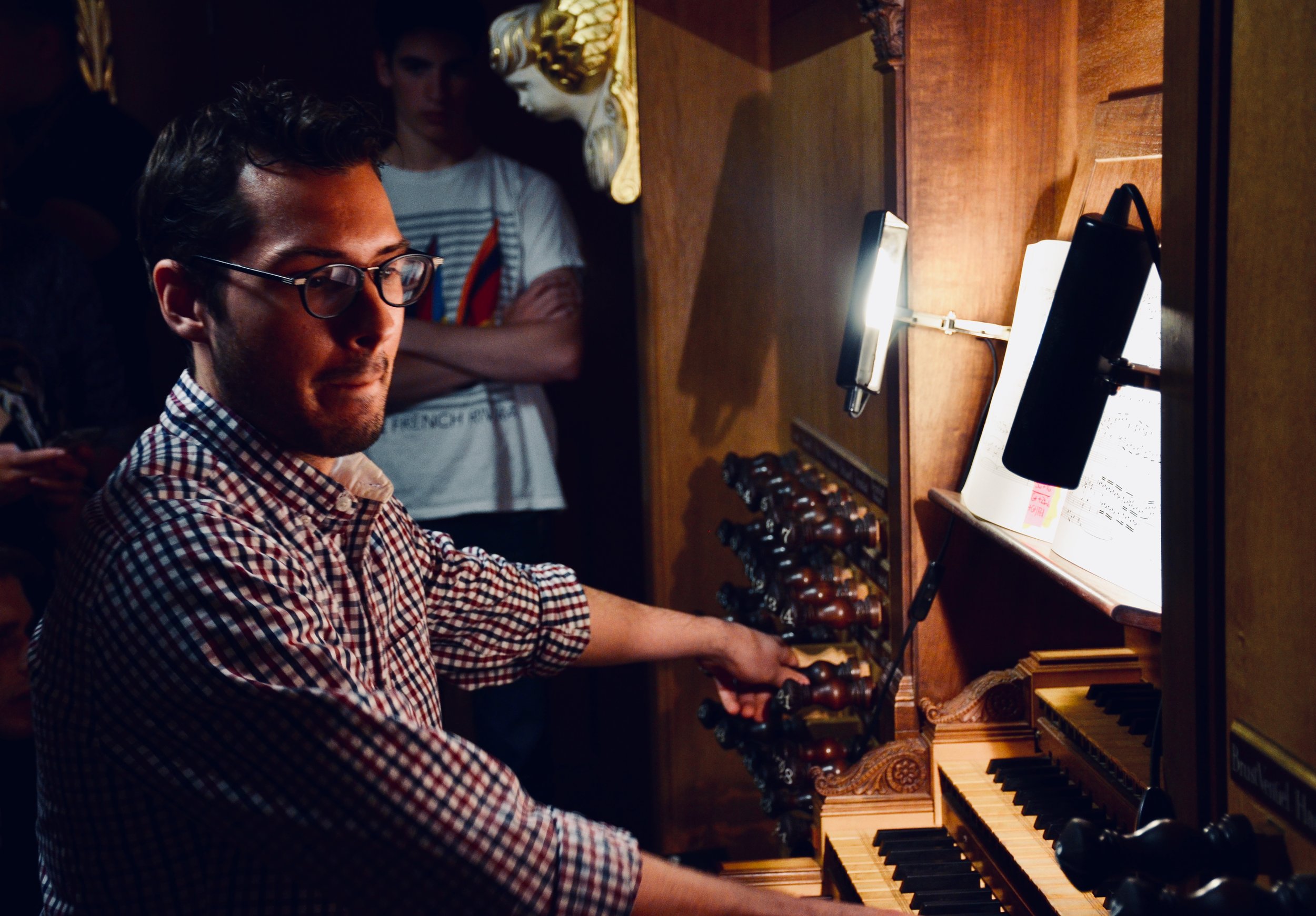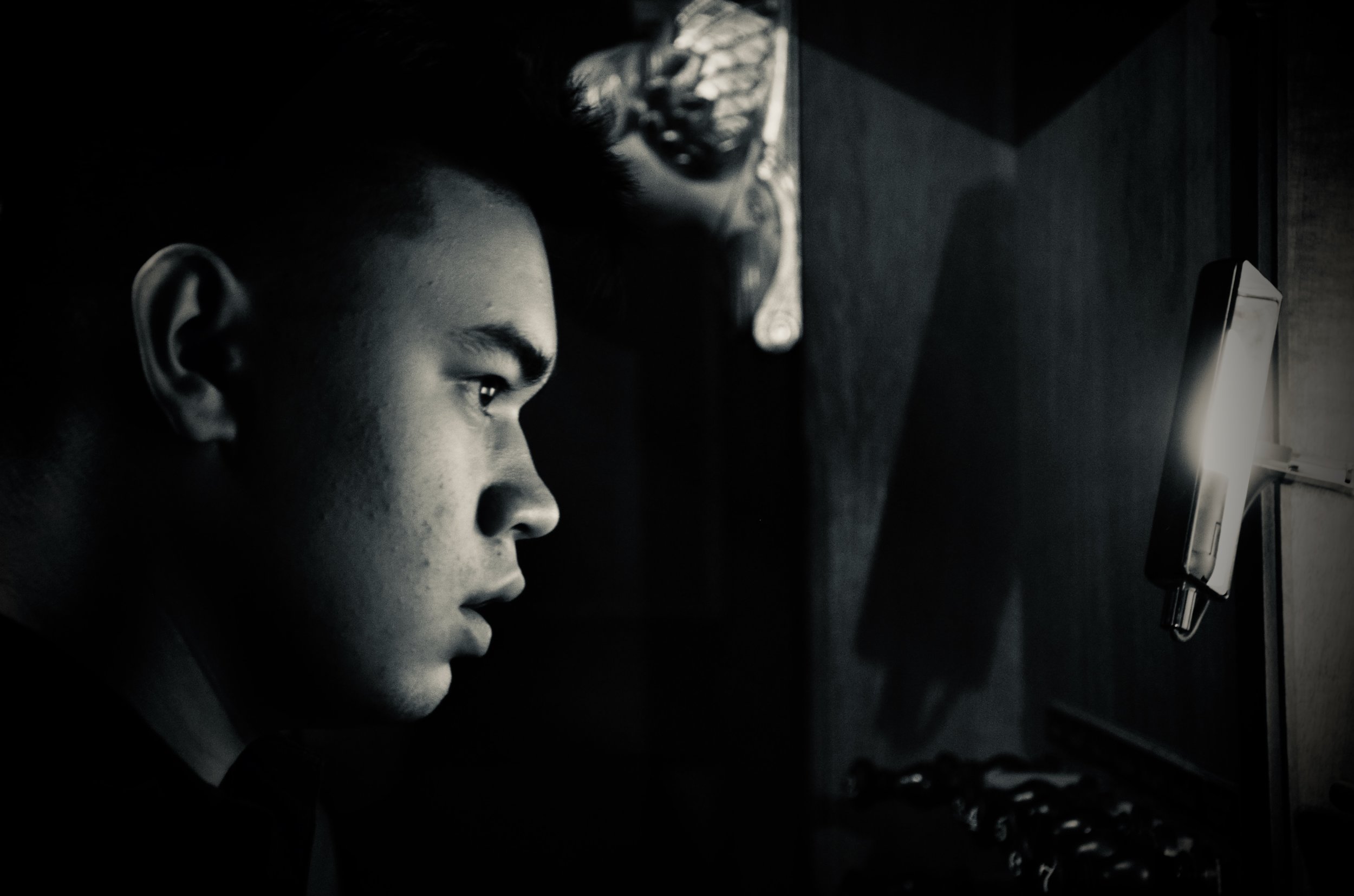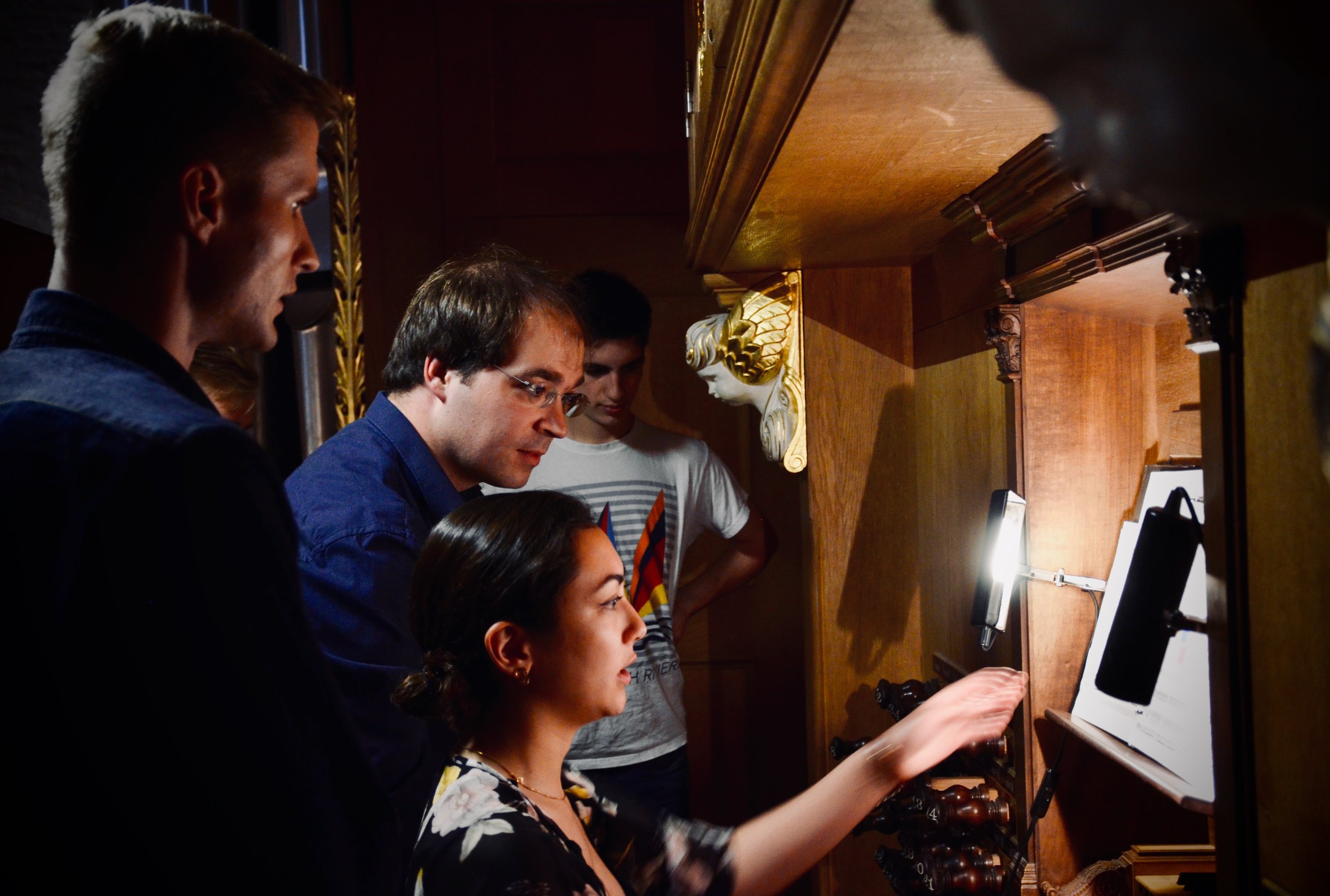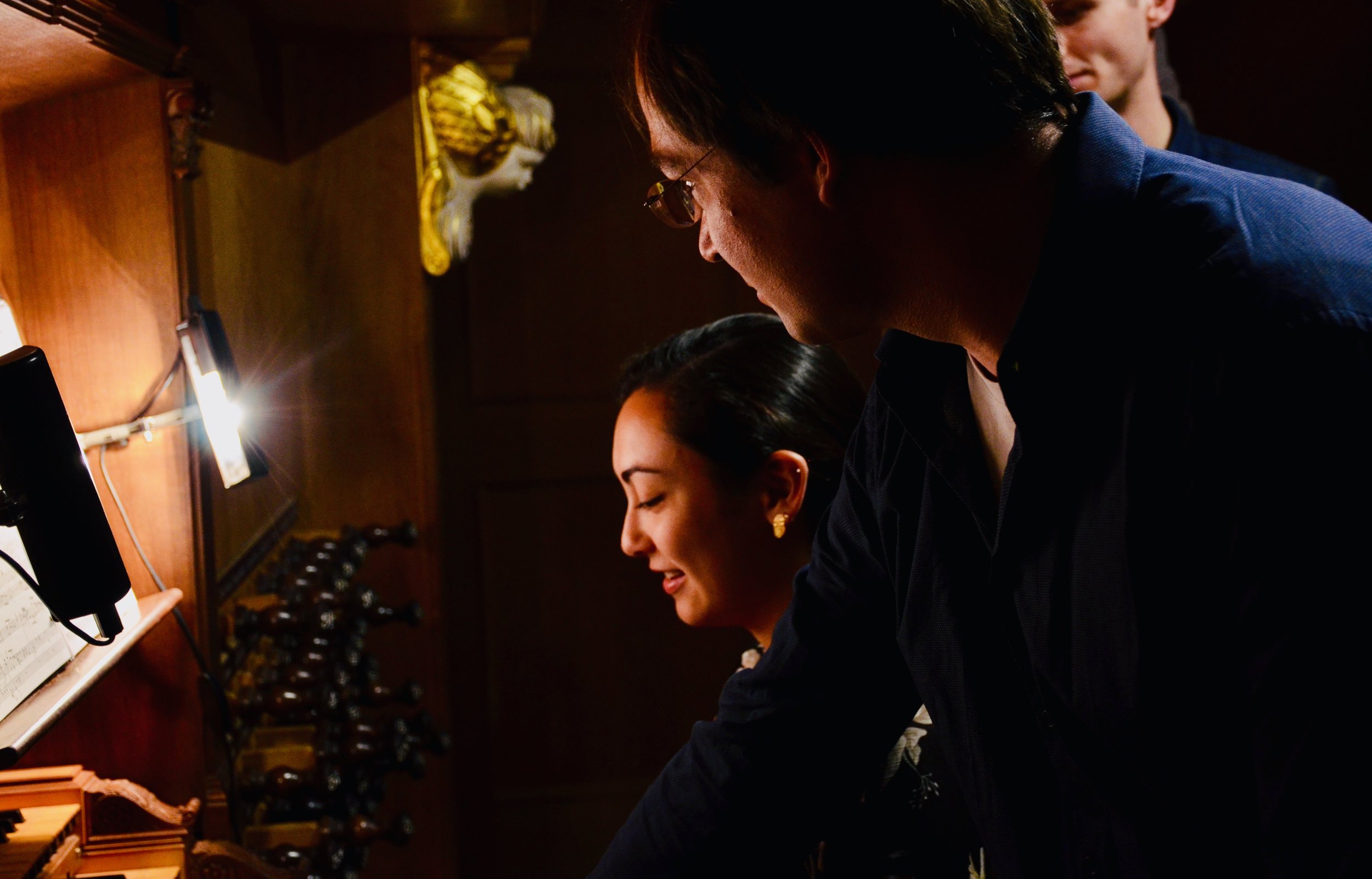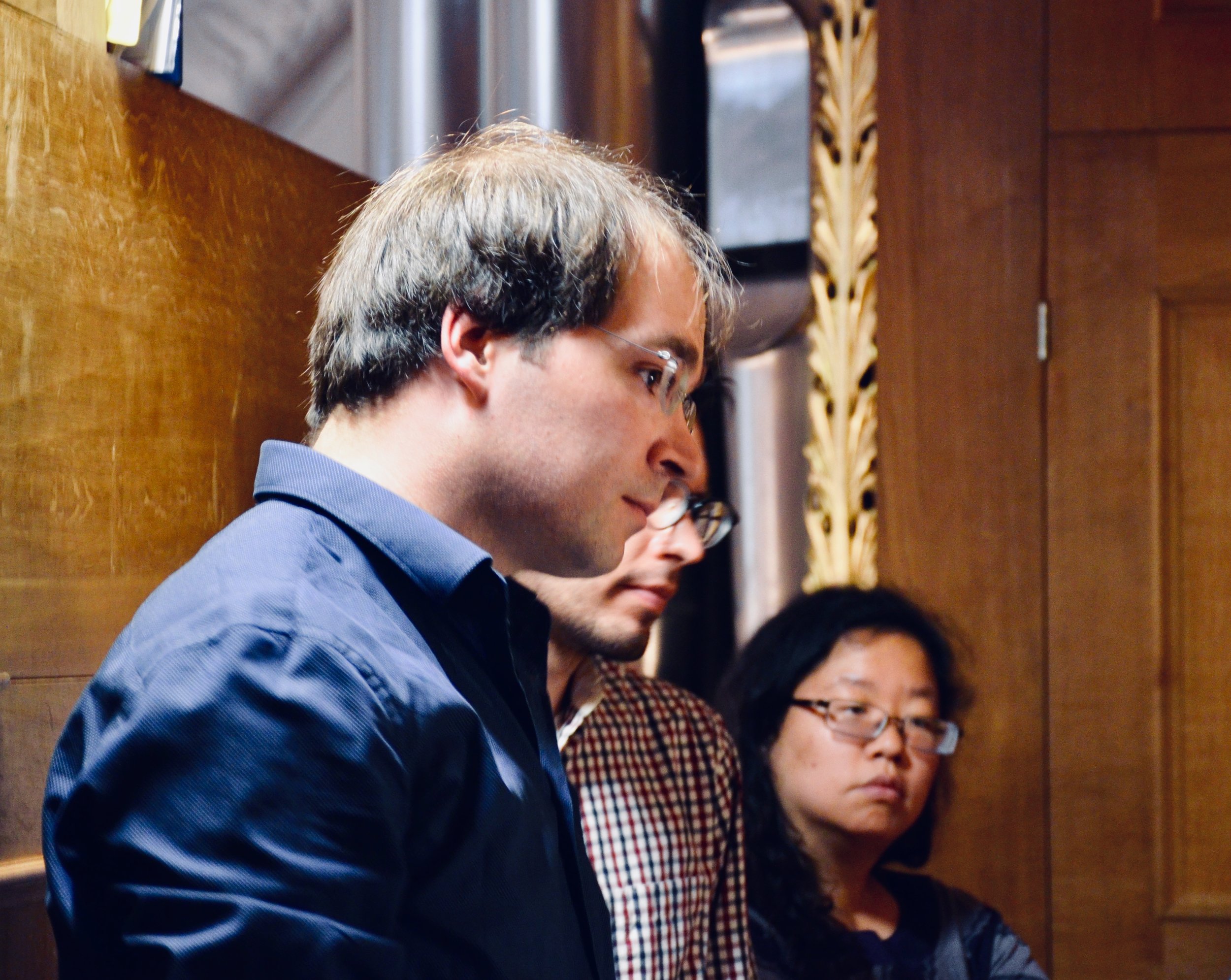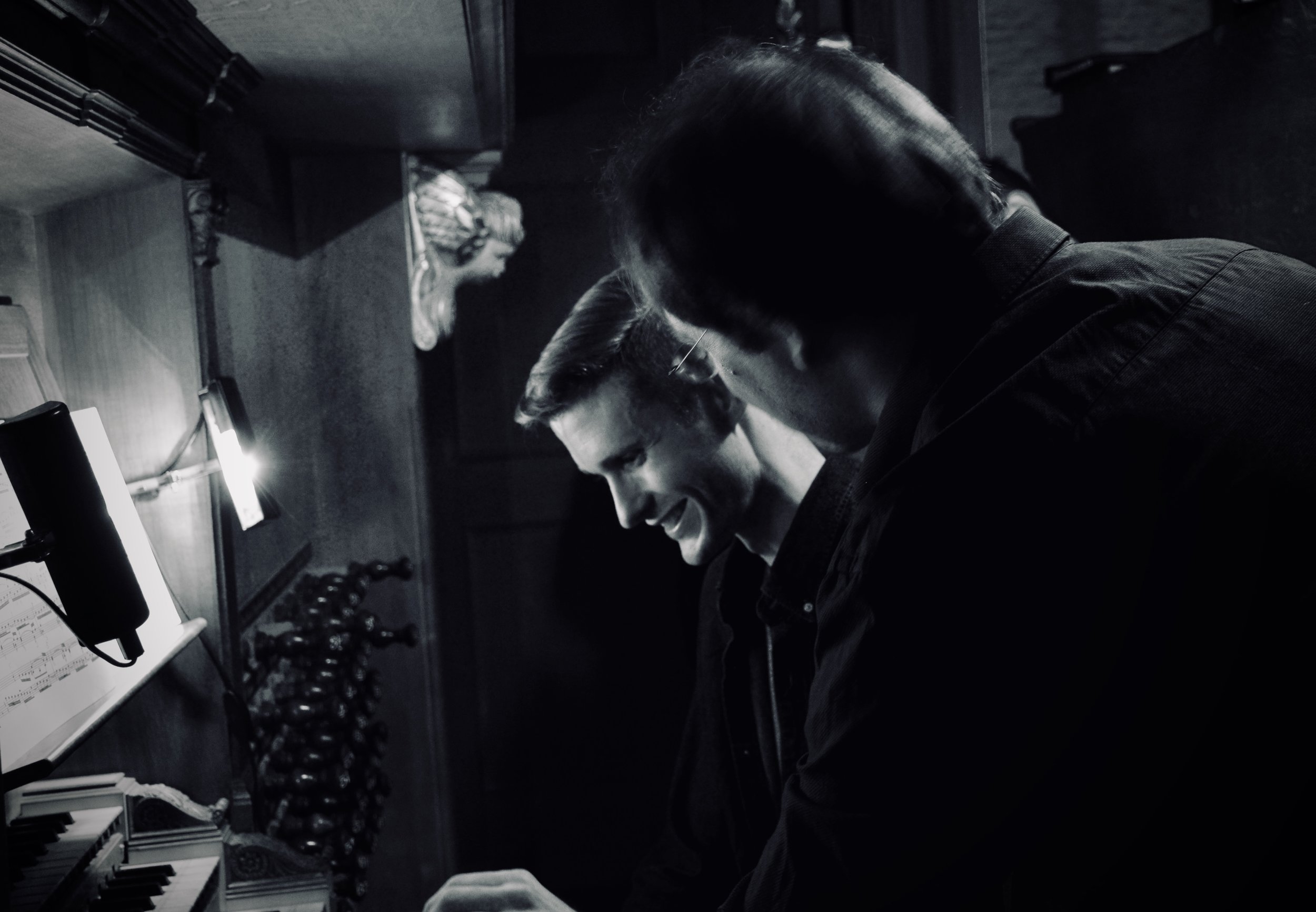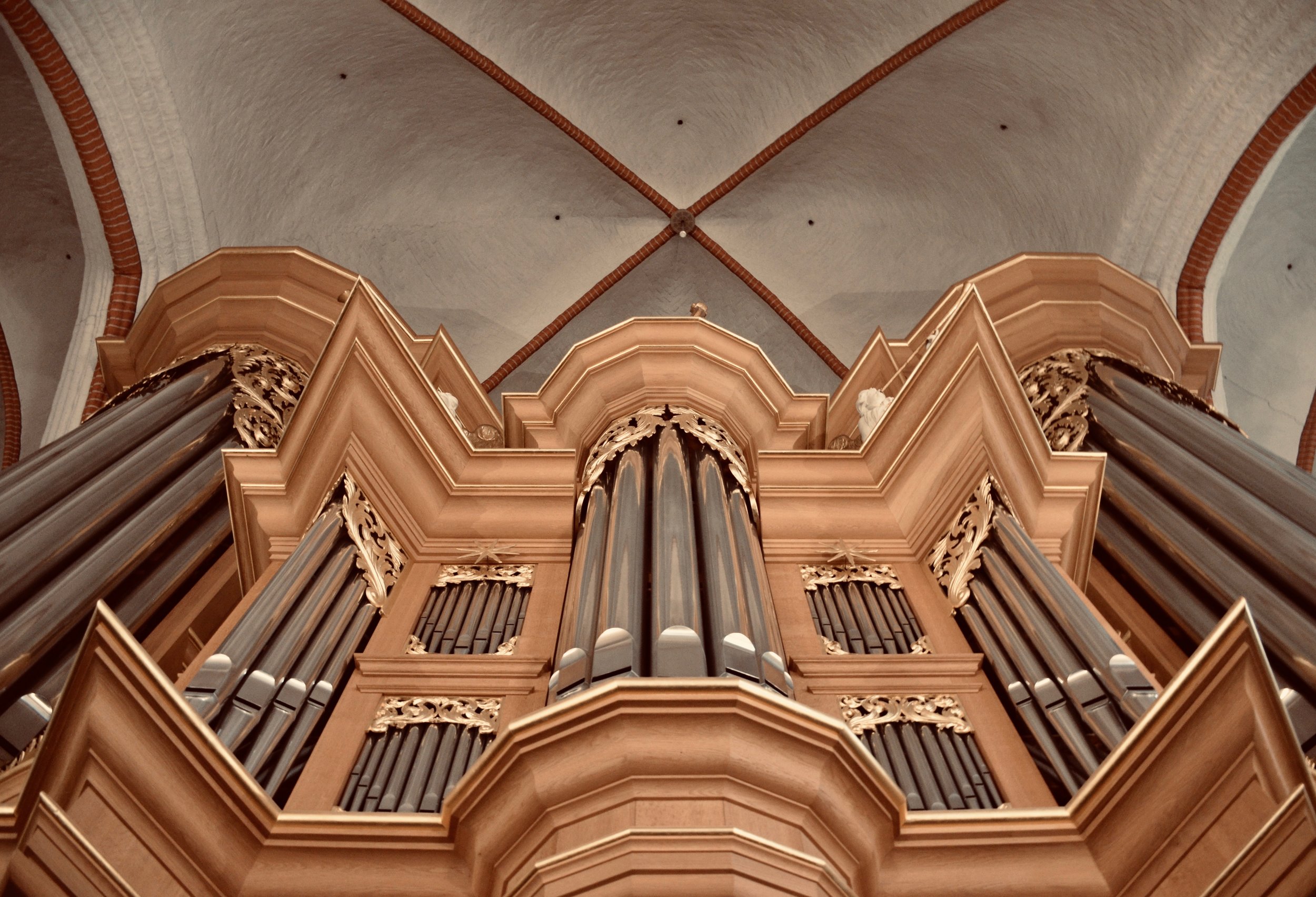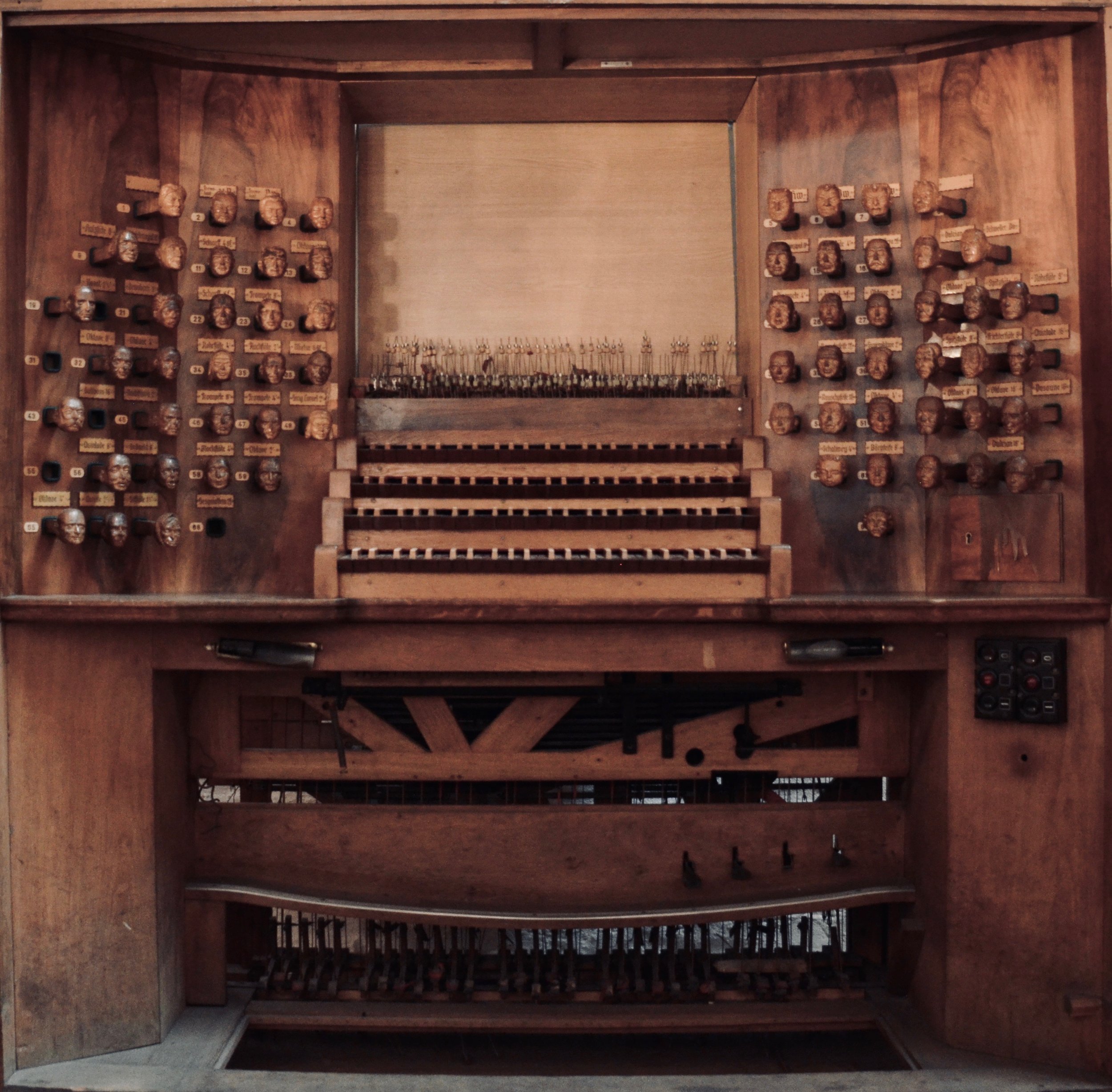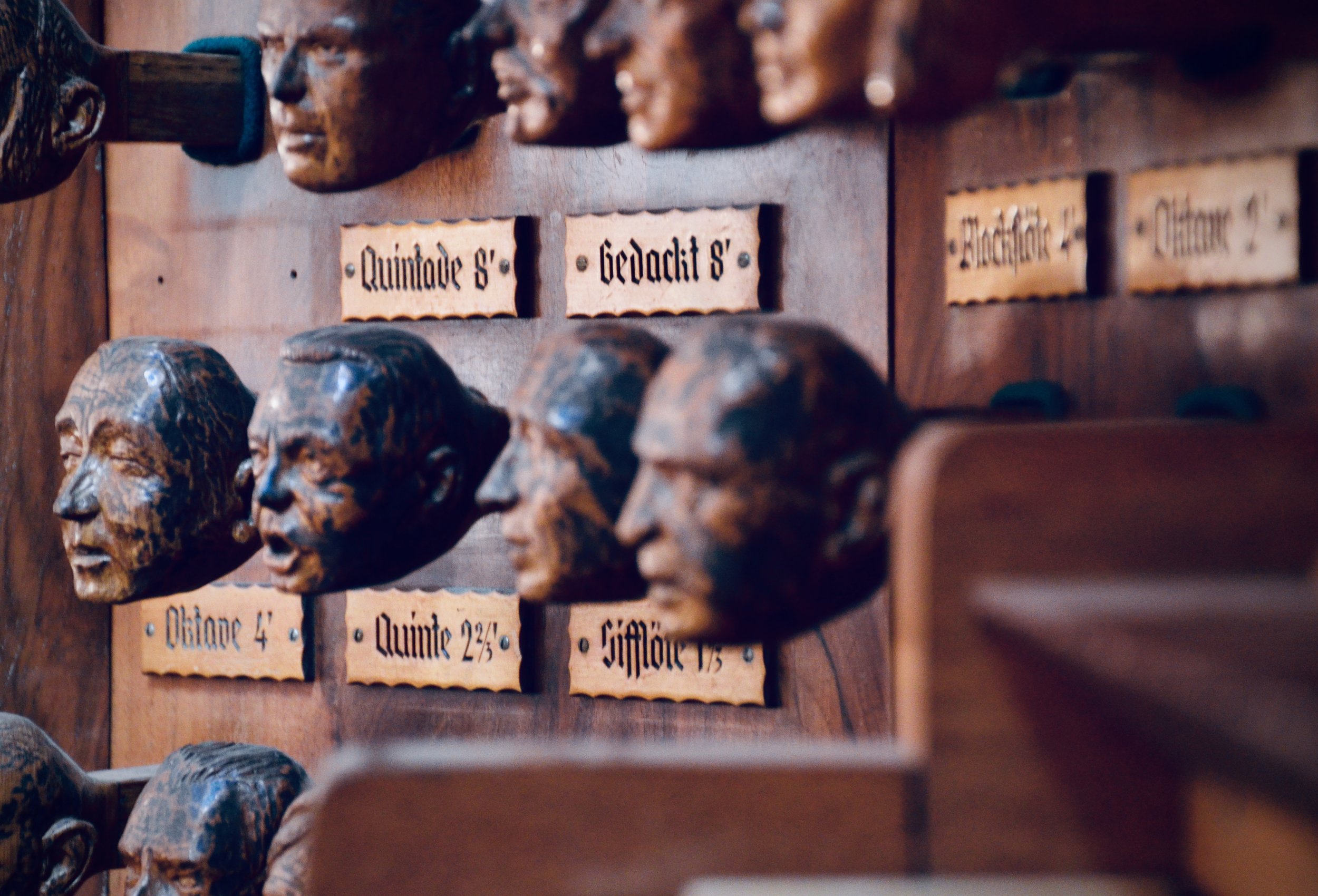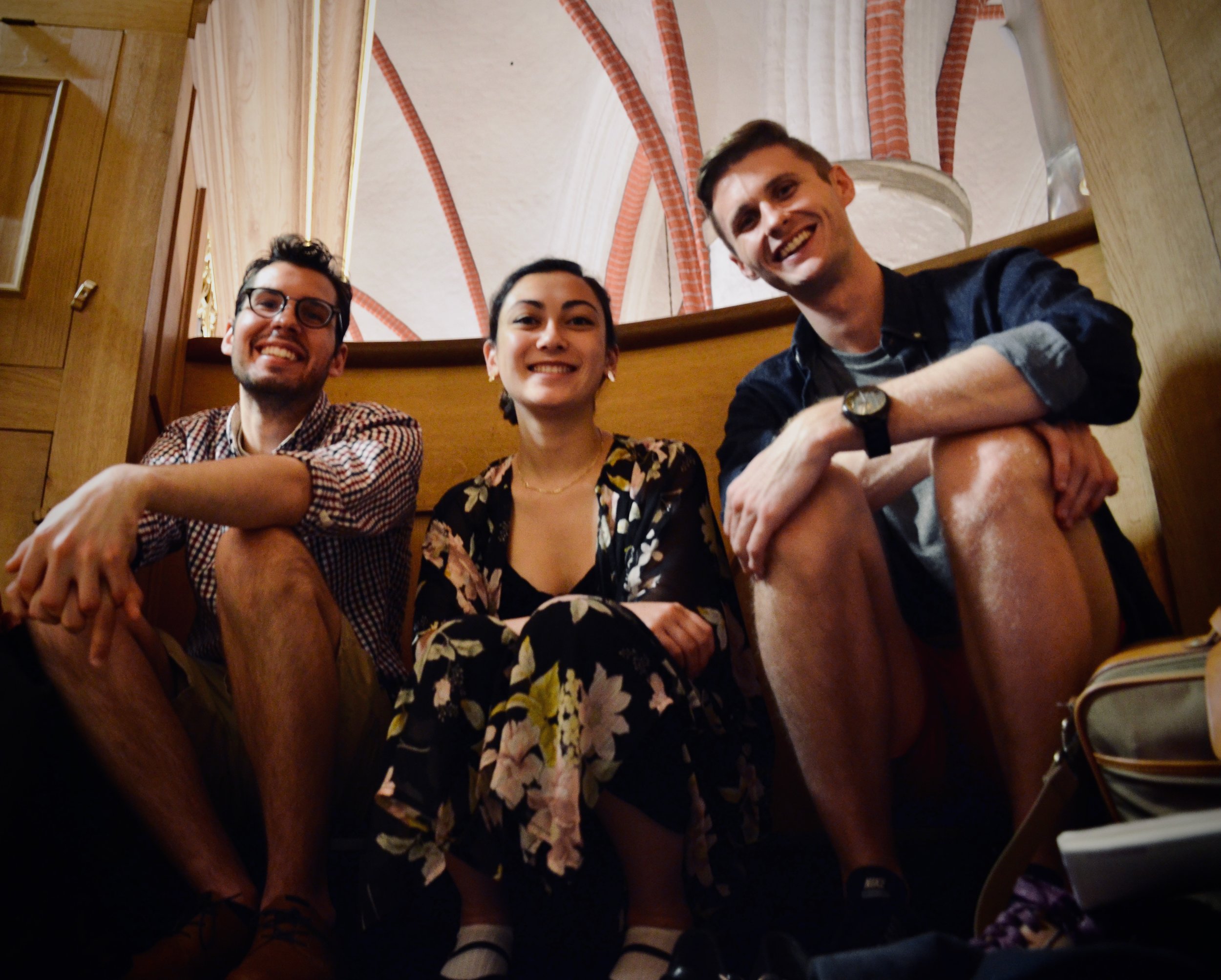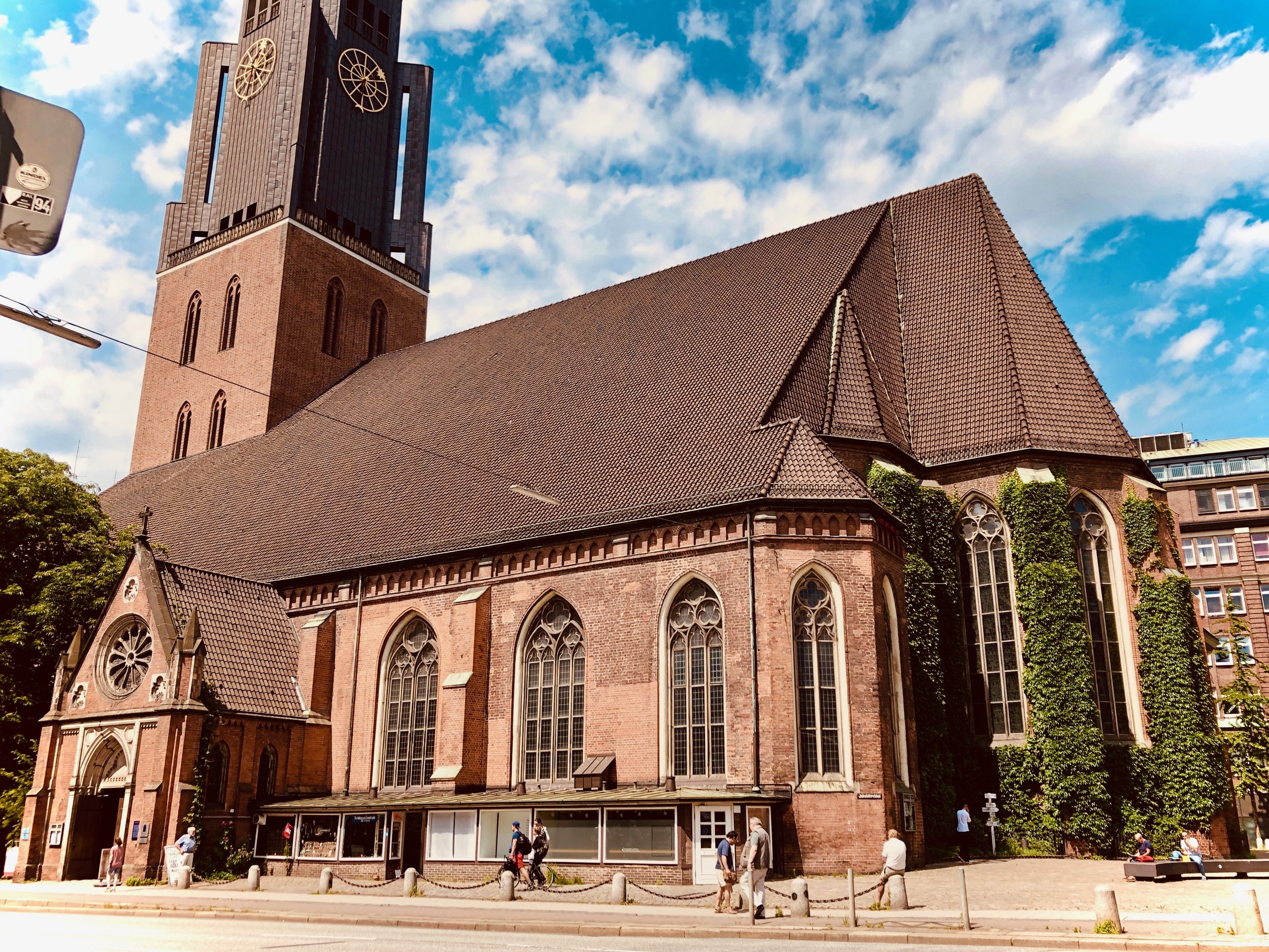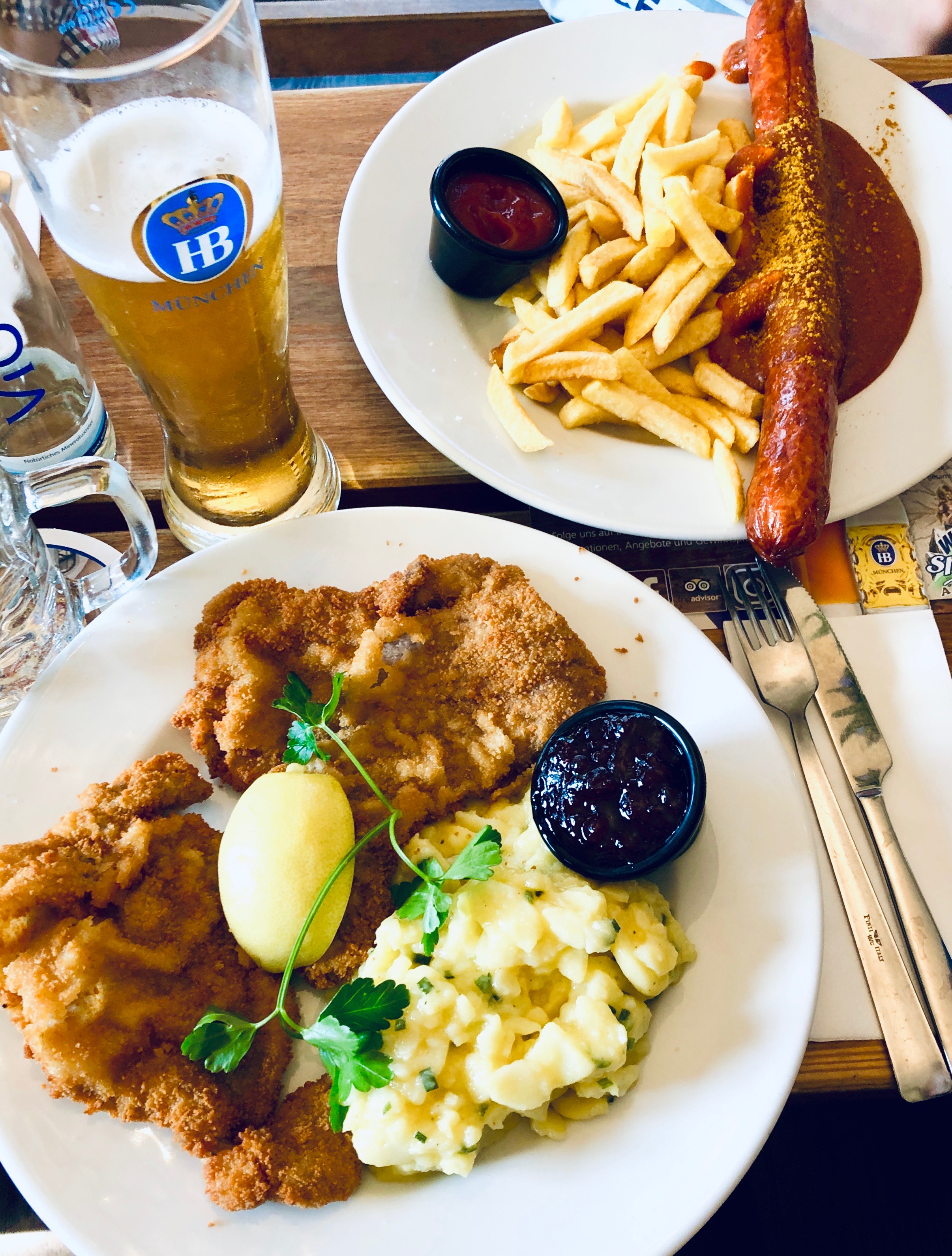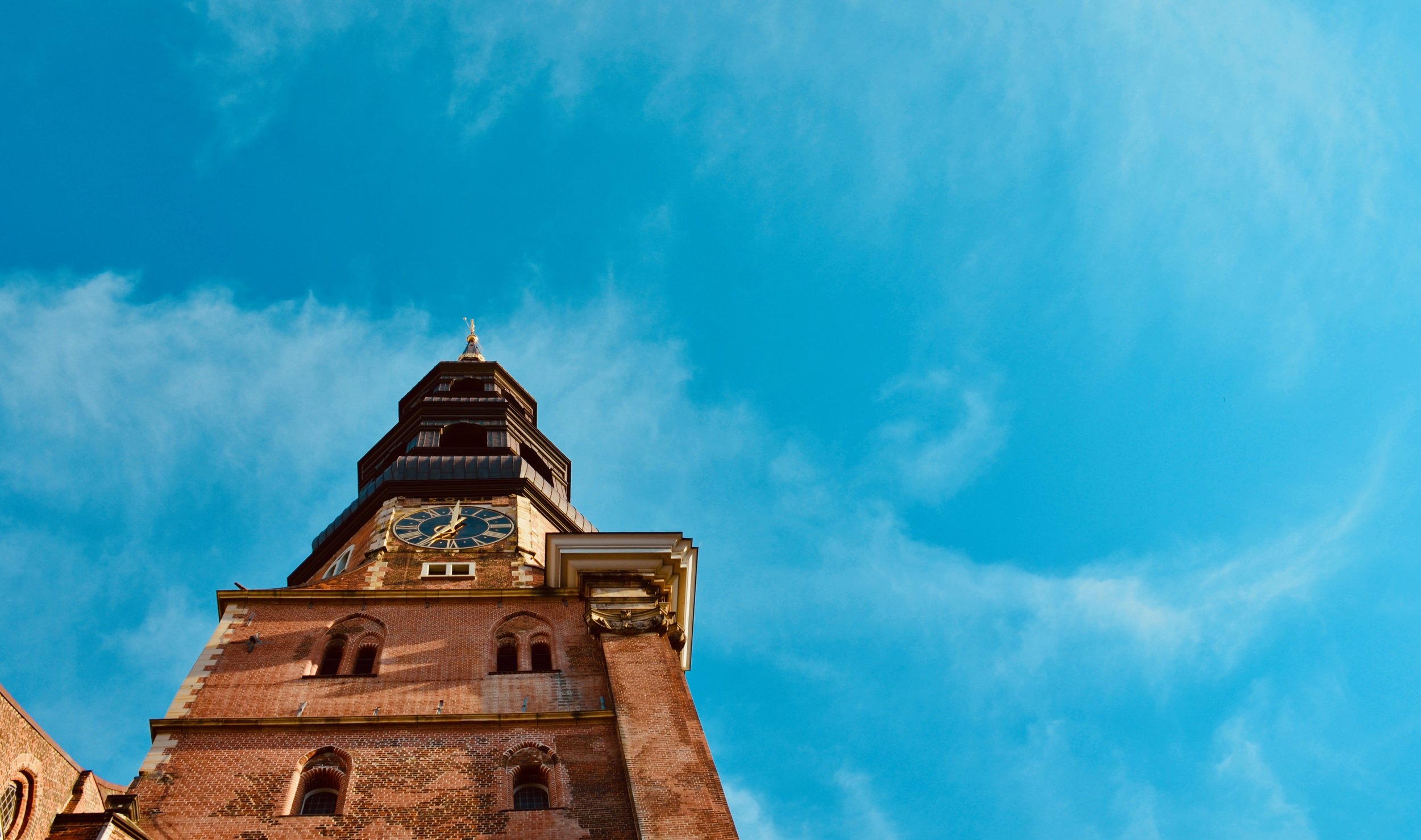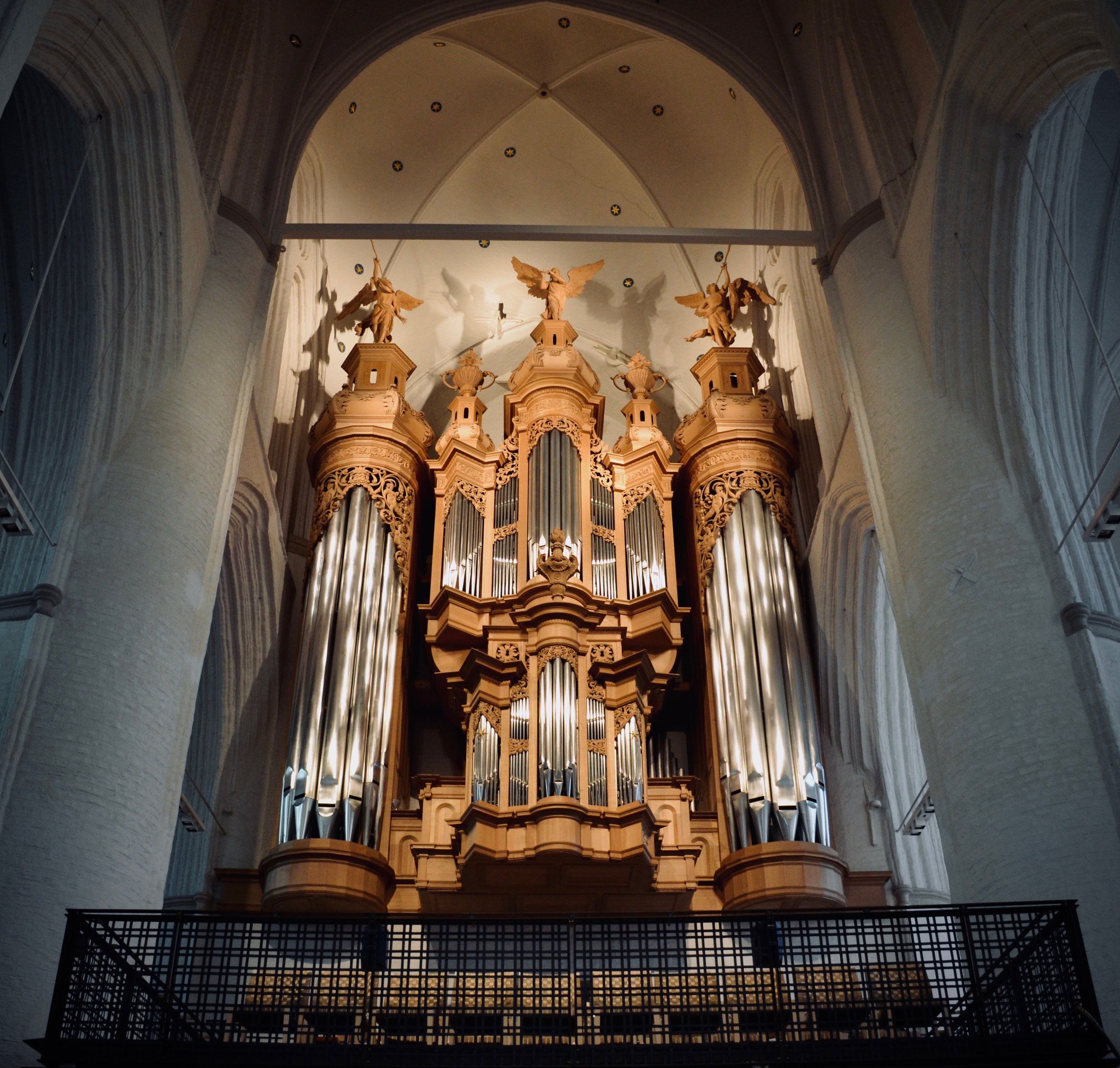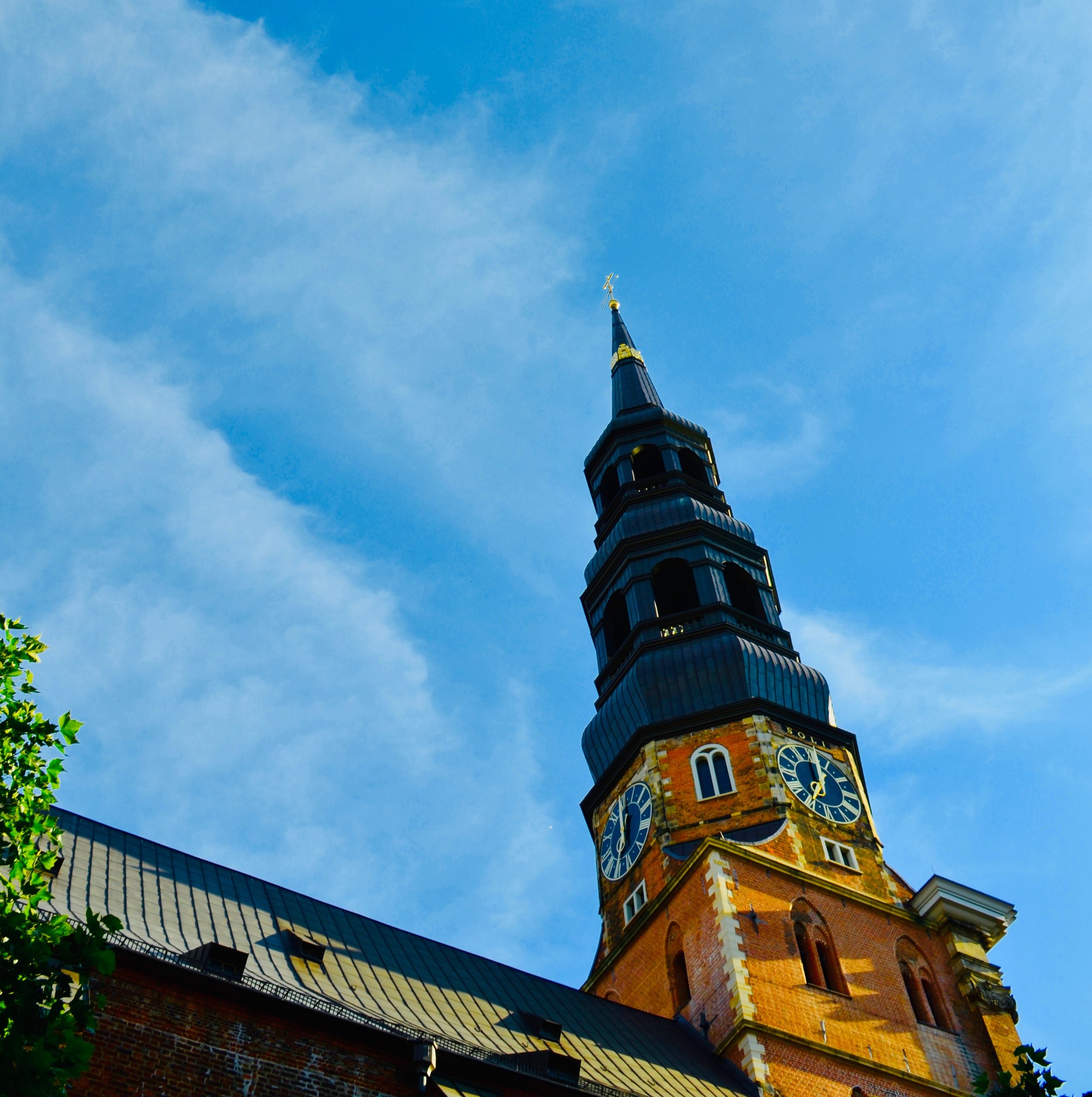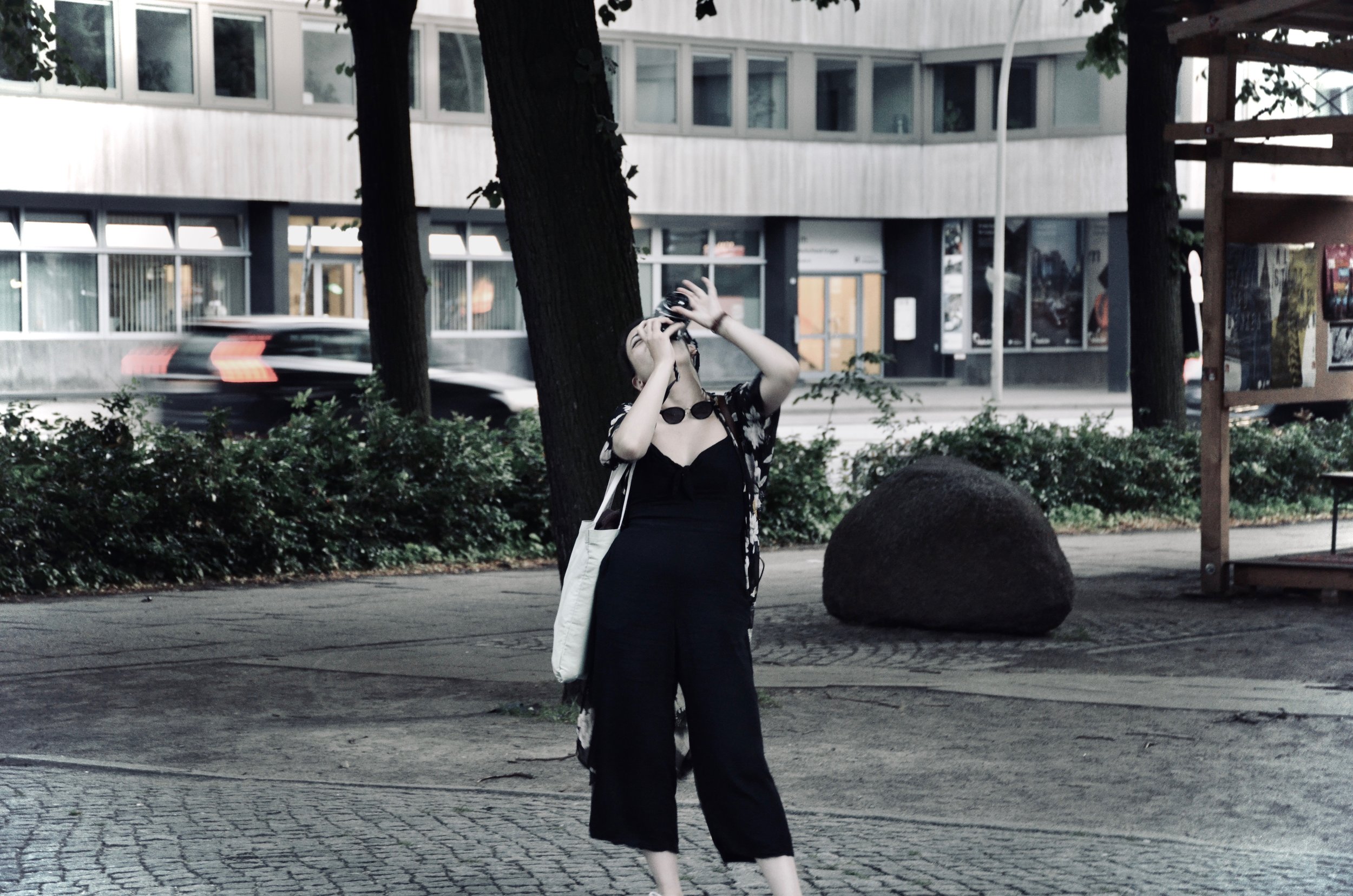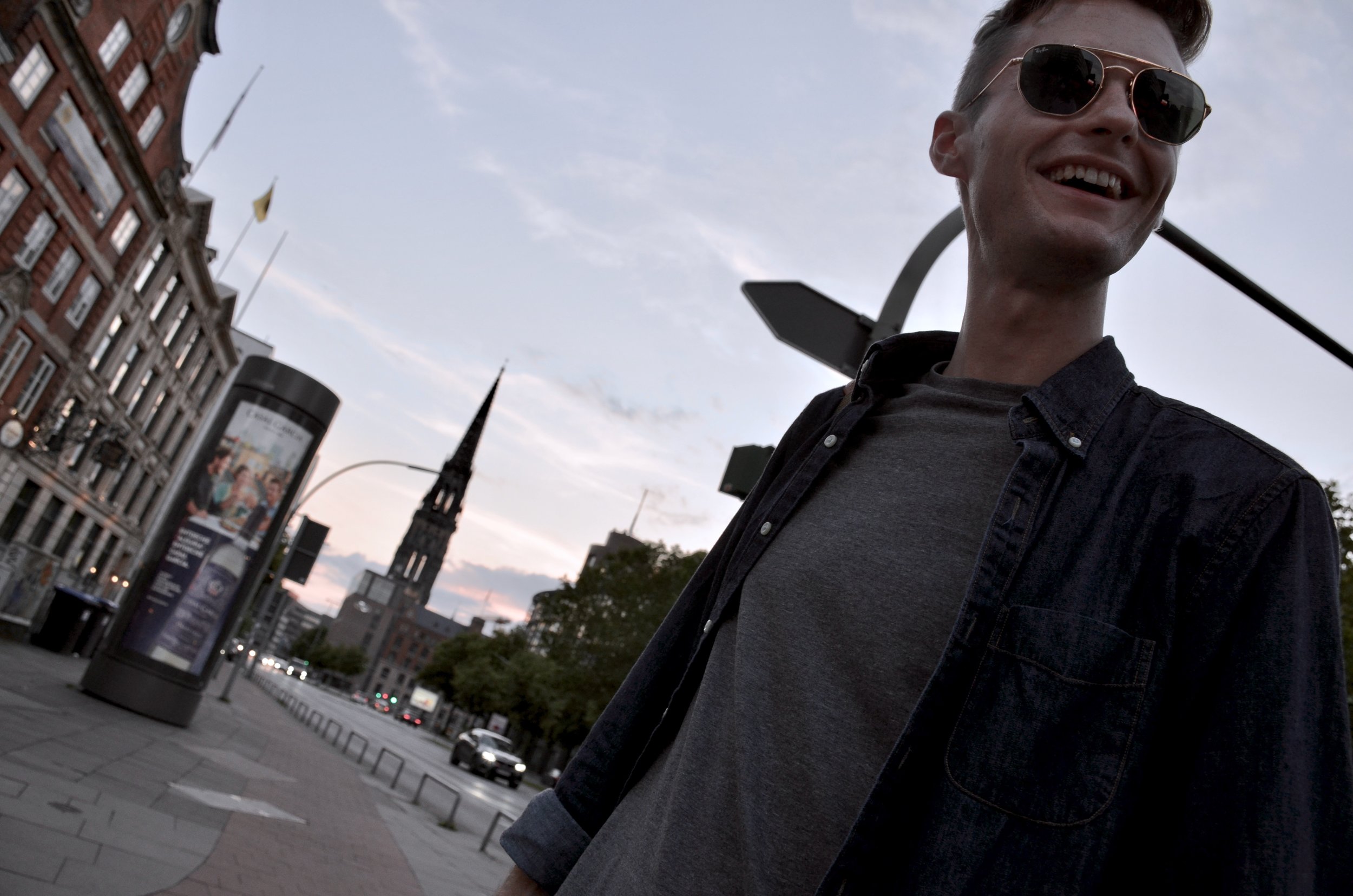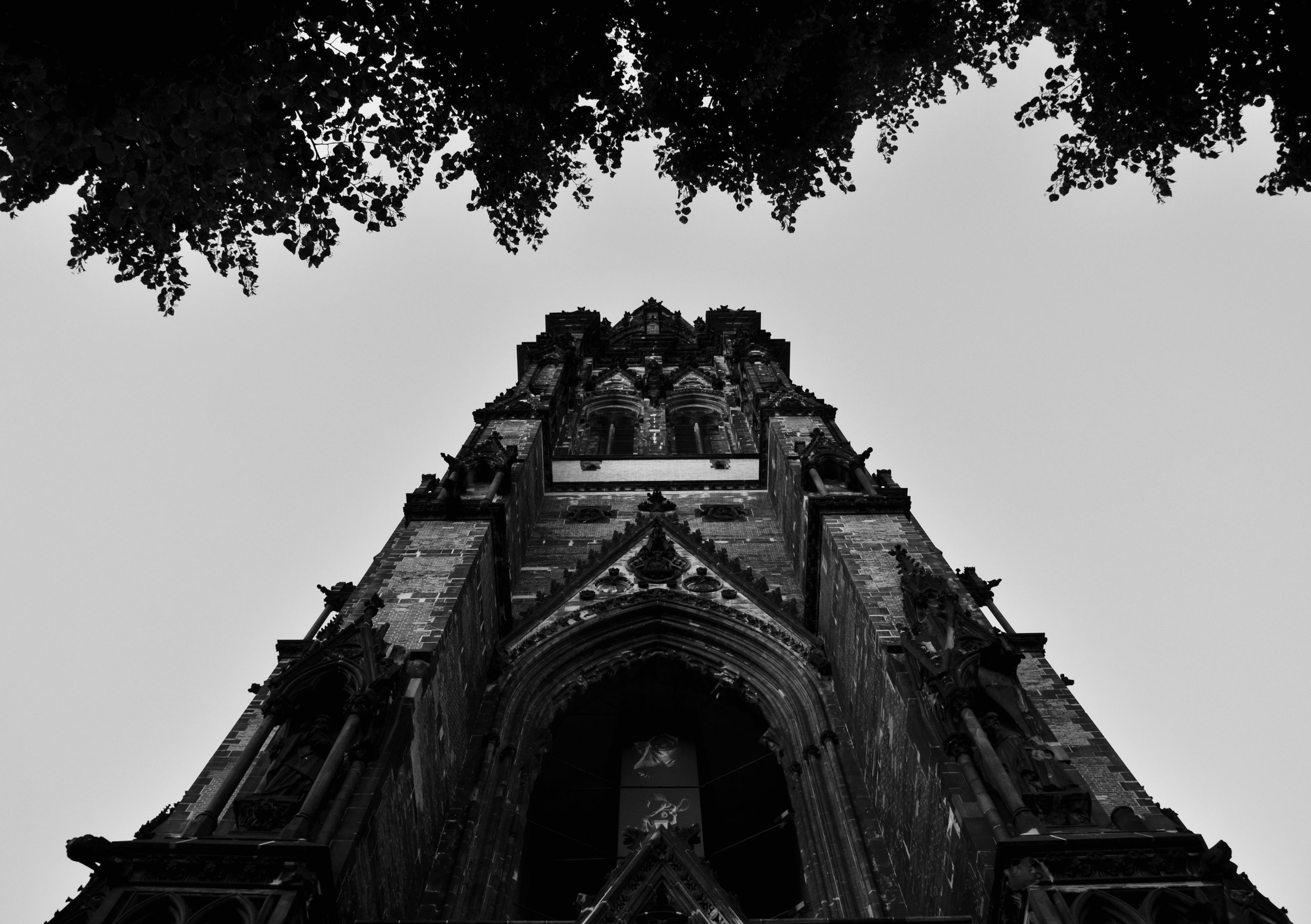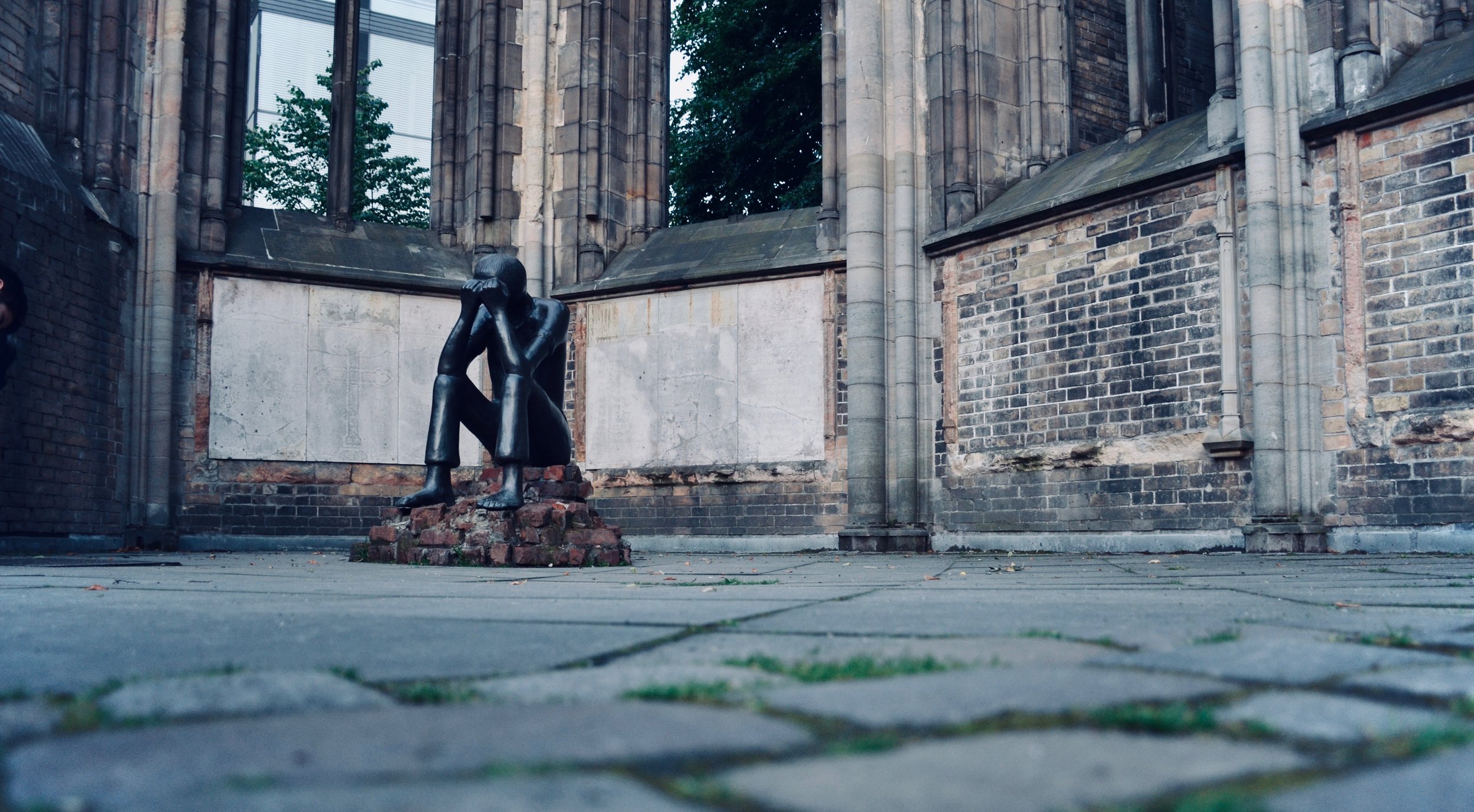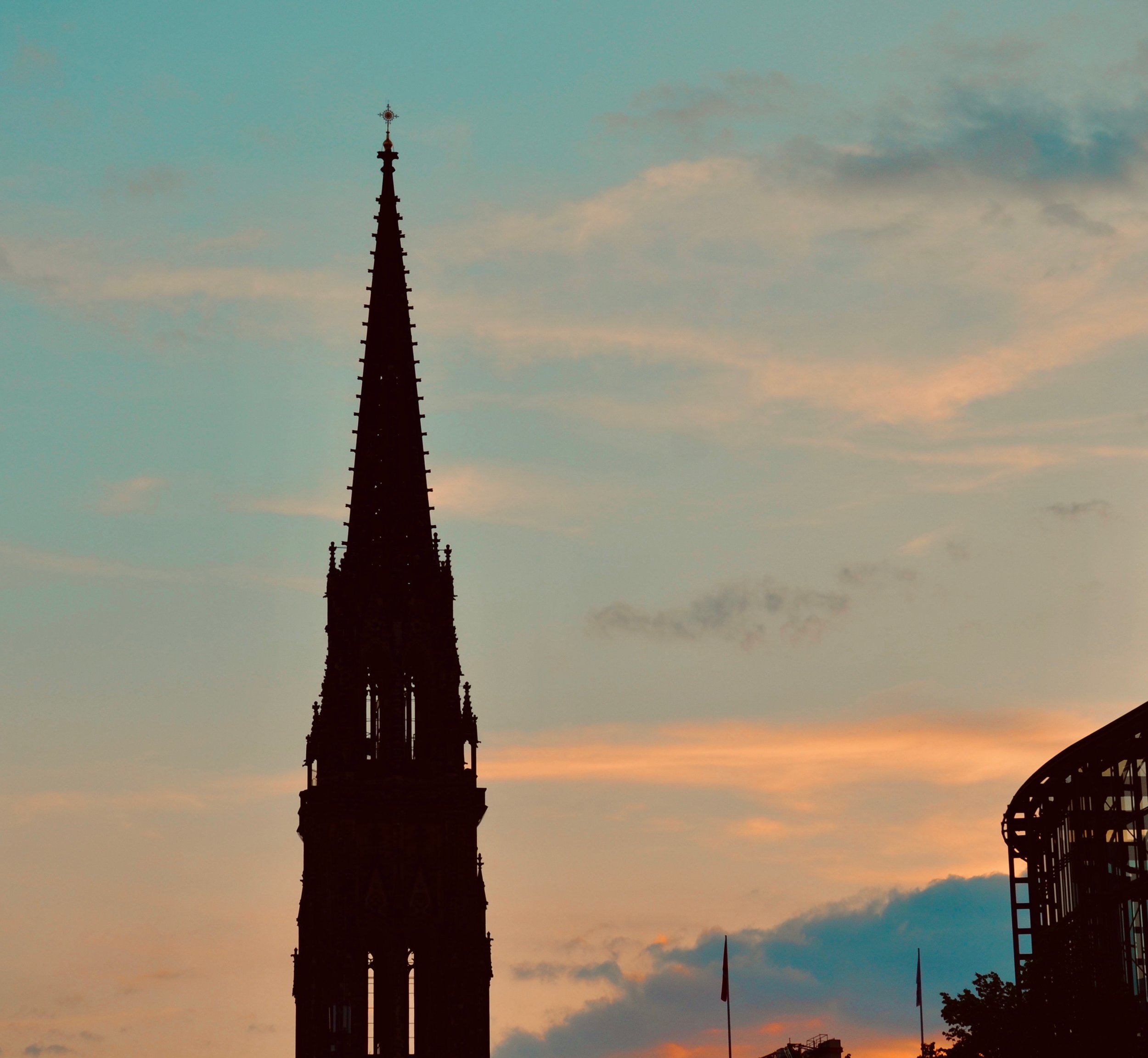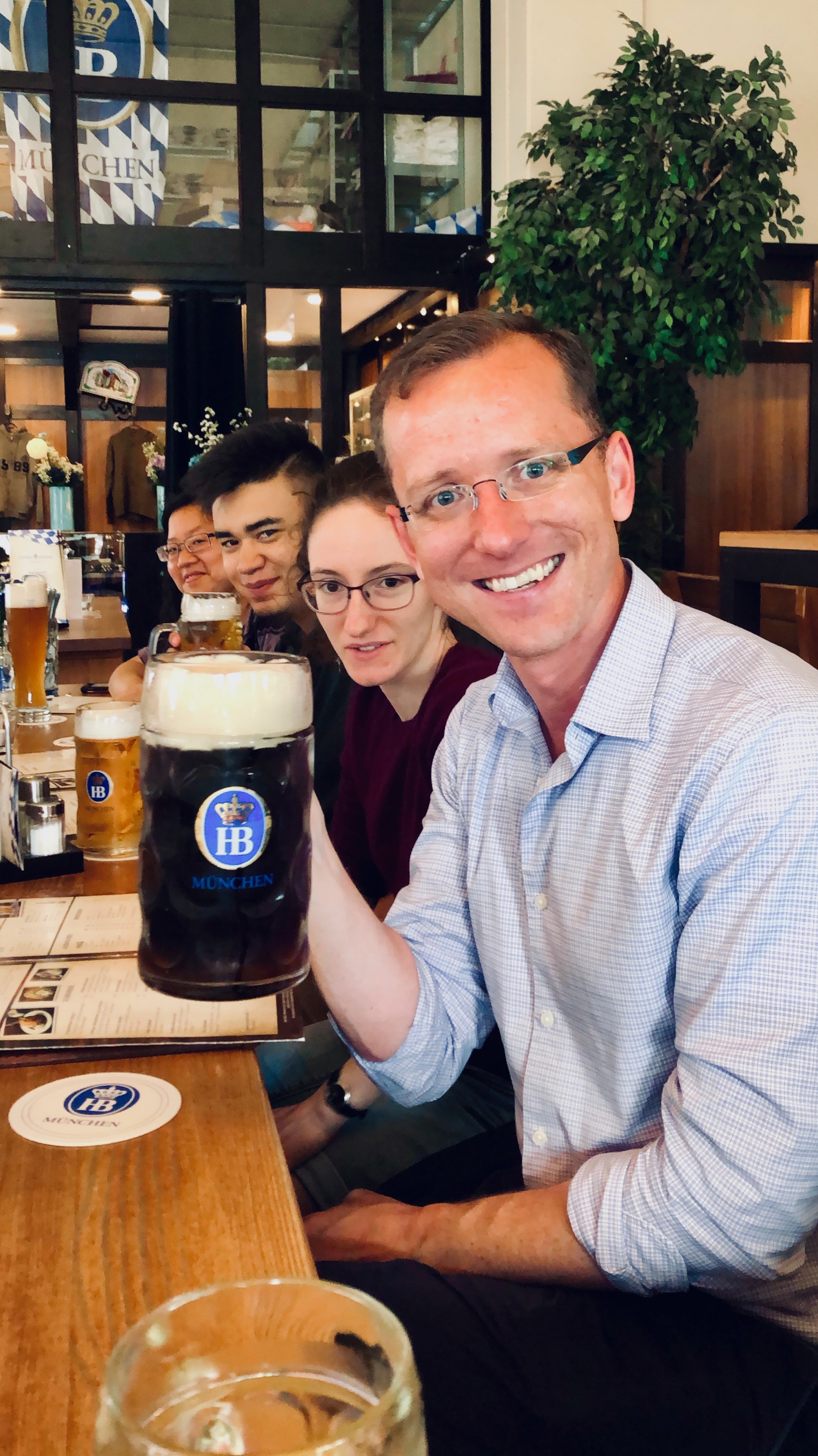Buxtehude, Bratwurst, and Beer: A Day in Hamburg
by Alexander Straus-Fausto
The new spire of St. Jacobi, Hamburg; the original was destroyed in WWII.
After a delicious brunch at home, we arrived in Hamburg at the Jakobikirche, one of the five main churches in the Altstadt (old city). We were greeted by Prof. Matthias Neumann of the Hochschule für Musik in Hamburg, who later introduced us to the parish organist Gerhard Loeffler. Mr. Loeffler gave a very interesting lecture about the organ’s history. This was the largest organ in existence before 1700! The organ case was destroyed in the second World War — but, thankfully, after other churches in Hamburg had been destroyed by bombing, the pipes of Jacobi’s instrument were removed and put in a bunker to protect them before this church, too, was damaged. In 1983, the Schnitger organ was restored by Jürgen Ahrend.
1693 Schnitger organ, St. Jacobi, Hamburg. Boston Organ Studio.
The first post-war console at St. Jacobi, Hamburg.
As we approached the organ loft, we came across two very interesting consoles: one with carved wooden heads for stops (the faces of financial donors!) and a modern console that controls the church’s second organ, built by Emanuel Kemper and located on the side balcony.
Nick Capozzoli plays Buxtehude Te Deum at St. Jacobi, Hamburg.
Nick started the day off with Dieterich Buxtehude’s Te Deum laudamus, which showed off many interesting colours of the instrument: a deep and majestic plenum, shimmering consort sounds (reeds and mutations), as well as delicate solo registrations. Nick played with a very controlled and articulate touch that served the character of each section. Prof. Neumann suggested some alternative choices for registration, including different versions of a plenum (full organ). Next, I played Buxtehude’s Chaconne in E minor. This was a life-changing moment for me, as I learned new ways to consider registration...the possibilities are endless! One thing he suggested was to consider the organ’s temperament and a piece’s harmonic language. Various spots in this piece move to tonal centers that do not sound good in this modified meantone temperament. He suggests that this is a clue to use softer registrations that, in turn, mellow out the disagreeable sound.
Prof. Matthias Neumann coaches Meg Cutting on music of Weckmann.
Prof. Neumann also demonstrated exact registrations used by the organist and composer Matthias Weckmann (1616–1674) when he auditioned for the position at this very church. Meg Cutting played one of Weckmann’s pieces, Magnificat secund toni, and tried out some of these combinations, including a textured plenum and colourful solo sounds. It was very informative to try out Weckmann’s own registrations at the church he worked. Prof. Neumann mentioned that one way to bring out the cantus firmus is to double the left hand in one foot and play the bass line with the other.
Enjoying a very large beer, and dinner, in Hamburg.
We then enjoyed an early dinner at the Hofbräu München, a restaurant known for good German beers, and many of us were shocked to see that they were much larger than the North American serving sizes! Half of the group ordered a litre and others ordered half a litre. The food was traditional Bavarian cuisine, and it was delicious!
We then headed to the Katherinekirche, where we were greeted by assistant organist and Hamburg student Xaver Schult. He played several improvisations to demonstrate the colours of this very new instrument, a Flentrop completed in 2013. He then let us try out the organ for ourselves. We played everything from Bach and Buxtehude to the minimalist music of American composer Nico Muhly.
2013 Flentrop organ, St. Katharinen, Hamburg.
Our time with these two instruments has inspired me to be more open and interested in different types of expression, whether it is the sounds I choose or the way in which I play it. With this mindset, we can hear new things in this old, well-loved music.
